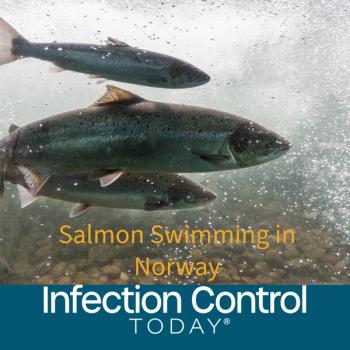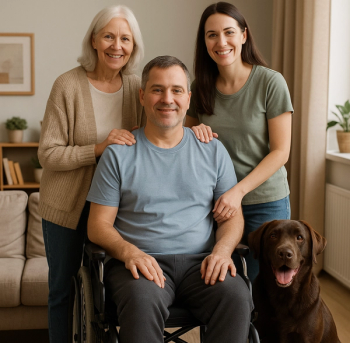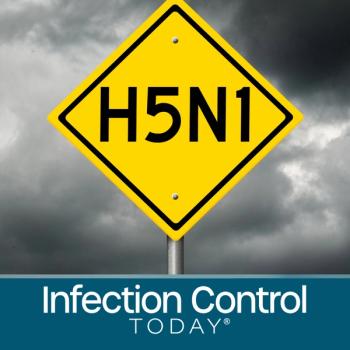
Wuhan Coronavirus Pushes Personal Protective Equipment Out of the Closet
Proper PPE for the Wuhan coronavirus includes powered air purifying respirators (PAPRs), an N95 mask, eye protection, gloves, and gown.
When Infection Control Today® ran a story
“Coronavirus” does not appear in that story. But type in “coronavirus” on any search engine these days and prepare to be swamped-727 million search results on Google as of this writing. “Wuhan coronavirus,” as the novel 2019-nCoV is known, produces some 251 million results.
Perhaps not surprisingly, personal protective equipment (PPE) generates a lot of interest as well. “For many, the memories of learning the donning/doffing process for the enhanced PPE that is required for Ebola are times of stress and excitement,” wrote Saskia v. Popescu, PhD, MPH, MA, CIC, in that ICT® article. “In some ways, it was highly interesting learning a new mechanism to protect against unusual diseases, however the changing guidelines and extreme precision that is needed for PPE was stressful. A single misstep in the process could result in deadly infection.”
Ah, yes, the stress. Wuhan coronavirus certainly triggers it, Neysa Ernst, RN, MSN, the nurse manager of the bioconainment unit at Johns Hopkins Hospital in Baltimore, tells ICT®. That’s the reason healthcare workers should sanitize their hands throughout the donning and doffing process.
“Almost every step of the way,” says Ernst. “When you’re questioning what you should do next? Just sanitize your hands so you have time to think.”
Or digest what you’re being told. Because there should be a trained observer watching.
“Someone is saying to you, ‘Now do this. Now do that,’” says Ernst.
Again, stress. “You want to make sure that you’re calm and thoughtful,” says Ernst. “Because part of what happened in the Ebola epidemic is that people were fatigued and removing PPE too quickly.”
Hands should be washed frequently and thoroughly for at least 20 seconds. Use alcohol-based hand sanitizer if soap and water aren’t available, Ernst advises.
Proper PPE for the Wuhan coronavirus, according to Ernst, includes powered air purifying respirators (PAPRs), an N95 mask, eye protection, gloves, and gown. But that could change in a fluid situation. “I just spoke with the nurses last night and said we just need to go PAPR [for coronavirus],” Ernst said at the end of January.
The final step after PPE donning is to do a 360-degree turn to make sure that there are no breaks in the PPE. Only then would the IP or any other healthcare professional be cleared to enter a room and tend to patients.
The healthcare professional can also stay in the PPE for only so long. “In our biocontainment unit, which is really built for viral hemorrhagic fevers and Ebola, we have a 2-and-a-half-hour PPE limit,” says Ernst. “And we actually write that on our yellow gowns. And we do that because that way somebody can observe and say, ‘You’re almost at your limit, it’s time for you to start to get out.’” That’s about the limit for coronavirus as well, she adds.
Doffing begins in the patient’s room, moving from areas designated as hot, warm, and cold. “Hot is where the highest risk for disease transmission is,” says Ernst. “Warm is when you’re taking off some layers of your PPE, maybe a pair of gloves, maybe PAPRs. And then as you progress into the cool zone, you are doffing your PPE into some type of trash container.”
One of the biggest challenges to donning and doffing is that, too often, healthcare professionals find the process so time consuming that they worry it hinders patient care.
“People are always looking for a shortcut and I understand that. But at the end of the day, I think that doing things correctly and safely matters a lot,” says Michael Bell, MD, deputy director of the division of healthcare quality promotion at the US Centers for Disease Control and Prevention (CDC) National Center for Emerging Zoonotic and Infectious Diseases. “Deliberate attention to safe practices is always warranted.”
Ernst says that many healthcare professionals view IPs as the gatekeepers who ensure correct donning and doffing and, as a result, might be blamed for insisting on the procedures. “And that’s unfortunate,” she adds.
There’s also no such thing as a 5-second rule, Ernst reminds. “Often I hear, ‘I am not going to touch the patient’ as an excuse for not donning PPE. They’ll say, ‘I’m standing at the end of the bed. I’m not touching the patient.’ In the meantime, the whole room is covered with things.”
Ernst works hard to prepare staff to treat patients with Wuhan coronavirus at Johns Hopkins.
However, the battle’s terrain keeps shifting, Bell points out. Unlike 20 or even 10 years ago, patients can easily find the care they want at chain drugstore clinics or urgent care centers, among other ambulatory settings. “Medical care has moved so rapidly away from hospitals,” says Bell. “In hospitals, it’s not as difficult to get everyone together and train them in proper procedures for the facility. That’s incredibly doable. But when you have a distributed healthcare system where patients are moving around a lot, it creates a bit of a challenge in terms of making sure everyone’s doing the same thing the right way.”
Don’t get him wrong: Bell isn’t necessarily knocking the care provided outside of hospitals. “In many cases the patient is going to do better because he’s not stuck in a hospital waiting for help. We don’t want to take that away. But wherever they’re getting care, we want to make sure it’s being done correctly.”
Bell, who has been involved in the development of evidence-based infection control guidelines, also isn’t necessarily saying that training hospital staff is easy-a lot of factors are in play. Protocols, supplies, and training for PPE can differ depending on the hospital. “There are healthcare institutions around the country which, because of the Ebola scare, really invested heavily in personal protective equipment and training. There are some facilities in the country that still don’t get it.”
Johns Hopkins Hospital gets it. The Ebola scare spurred the creation of a tiered hospital system meant to ensure readiness. Of the roughly 6000 hospitals in the US, 10 have been designated regional Ebola and other special pathogens treatment centers (RESPTCs). Johns Hopkins is 1 of them.
IPs and others should use the correct PPE for the particular pathogen in question, says Ernst.
“When Ebola first came out, you saw people and ... those white suits. And that may be right for Ebola. I don’t know if it’s right for coronavirus. Do you need somebody in a spacesuit for something that doesn’t require a spacesuit?”
PPE training should be continuous, says Bell. He uses the metaphor of sweeping dust bunnies off the floor. In a few days: more dust bunnies. “This is the challenge,” he says. “It’s not a 1-and-done thing. If there was a great miracle vaccine that could prevent transmission of healthcare infections, and everybody got that shot once and you were done, I would be ecstatic. But there is no such thing.”
Bell also offers this bit of advice: PPE isn’t magic. “It doesn’t automatically protect you. You have to use it correctly like any other tool. I still see people with their noses sticking out of their masks, completely missing the point that their nostrils are now exposed.”
It often comes down to education-or lack of it.
“If we think about how nurses, doctors, and other clinical staff are trained these days, they don’t receive the same kind of microbiology training that they used to. A lot of that is shortened just because there’s so much to be taught and time is limited.”
Healthcare workers need to learn not only how to use PPE, but why and when they should use it.
Hospital administrators should lean more on mentoring, and less on monitoring, Bell believes, adding that a lot of monitoring will be done digitally in the future anyway. Tailor PPE education to specific audiences; what IPs, doctors, and nurses need to know isn’t the same as what environmental services (EVS) staff and the cafeteria crew need to know. In addition, keep in mind that a lot of people who work in hospitals are contractors. Healthcare workers aren’t the only ones who should wear PPE. If a patient is coughing, get a mask on him or her or else risk being splashed with mucus, pathogens, or other foreign bodies.
“Protect the bottom of your eyes, your nostrils, your mouth: Those are the areas that are most susceptible to infection by viruses and many bacteria,” says Bell. “That’s also why we’re less concerned by things like exposed forearms or the neck. They can be washed off fairly easily. Protecting your eyes, nose, and mouth is key.”
As ICT® noted in last month’s cover story, “The level of readiness we saw in 2014 is not the same as in 2019. When the tiered hospital approach was developed and the outbreak was slowing, the push to throw resources to improve preparedness also waned. Hospital administrators no longer felt the need to spend thousands of dollars on PPE and training when the risk of Ebola was gone.”
It will be interesting to see what happens when the coronavirus scare wanes (if it wanes). Right now, healthcare professionals care very much about proper use of PPE.
“Which is actually good,” says Ernst. “It’s good because it’s a reminder to people. This is what we should do every day.”
Newsletter
Stay prepared and protected with Infection Control Today's newsletter, delivering essential updates, best practices, and expert insights for infection preventionists.





